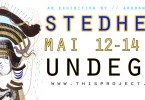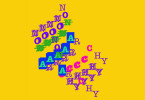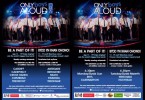Firstly, let’s lay to rest a common misconception regarding digital sound: despite what you may have heard, it has the potential to offer far higher fidelity than any analog system, high end vinyl included. This is not open for debate – double blind test after double blind test has established that even self-professed audiophiles with “golden ears” cannot tell the difference between a vinyl record being played directly, and a CD recorded from that vinyl. In fact, to store music with the same level of precision that a CD does, a vinyl record would need to have grooves roughly 20 times deeper. In terms of pure audio fidelity, the humble Compact Disc from the 1980s is the most perfect consumer audio format ever released – and because it can now be easily copied with no generation loss, the inevitable degradation of the physical medium is no longer an issue (in retrospect, a serious blunder for those who sell that physical media). Perfect Sound Forever indeed.
But sound quality alone doesn’t sell a format. Convenience inevitably wins over quality, and modern digital music files are typically stored in a “lossy” format such as MP3 or AAC (iTunes). These are designed to save disk storage space by identifying the parts of the music we theoretically cannot hear (and more aggressively, the parts we notice the least) and throwing them away. At best, the difference is nigh imperceptible; at worst, the effect is the familiar and grating “YouTube sound”. Typically, it is not enough to be noticed in a noisy environment or on cheap equipment, and it lets you put your whole collection on your phone instead of just 20 or so albums, and so we regard it as acceptable. The sad thing is that lossy formats became popular way back in the 90s, and they aren’t really necessary anymore apart from on portable players – the average music collection would easily fit on the average hard drive without any compression at all, with room to spare. But old habits die hard, and unfortunately to the modern layman, “MP3″ is synonymous with digital music.
There has, to be sure, been something of a minor backlash against the use of lossily encoded music. Many technically minded music lovers who want the full experience of the music with the practical advantages of digital storage, take the trouble to preserve the data from the original CD through “lossless” formats such as FLAC. They feel rightly aggrieved that online digital music sales offer a substantially lesser product for the same price, and the long-heralded but always-delayed “death of the CD” would, if it ever came to pass, represent a significant backwards step for both audio fidelity and consumer choice. Others, however, throw the baby out with the bathwater and retreat back from the digital audio revolution entirely. Vinyl record sales are ostensibly “on the rise” and it has become fashionable among indie groups to release albums exclusively on cassette tape.
How do we explain the tenacity with which we cling to inferior analog formats such as cassette tapes and vinyl records, with all their clicks, pops, hisses, wow and flutter? Apart from the conflation of “shitty sounding digital formats” with “all digital music”, one obvious culprit is romanticism. Music is an aesthetic experience, and aesthetics is not confined to mere hearing. Decades spent carefully lowering needles into grooves, listening to crackles and pops, and rolling joints on the covers have been associated with the pleasure of the music itself. This is not necessarily a bad thing – after all, if there’s one thing music is about, it’s shared cultural experience, which eventually becomes shared cultural nostalgia. There’s no shame in getting a kick out of playing an MC Hammer cassette on an original Walkman, as long as we take care not to let the ritual overtake the religion.
Nostalgia is an important aspect of music, but every generation makes its own nostalgia. Disturbingly, a Stanford professor who tests his incoming class every year found that with each passing year, more and more of his students actually subconsciously preferred the warbling sound of MP3, just as their parents preferred the sound of vinyl. If I get to choose my own future nostalgia, I’d like to look back fondly on listening to the music I love the way the artist intended. I shudder to think of a future where people who openly cherish the sound of a crappy YouTube video are regarded as “purists”, don’t you?
– Tal Stokes






